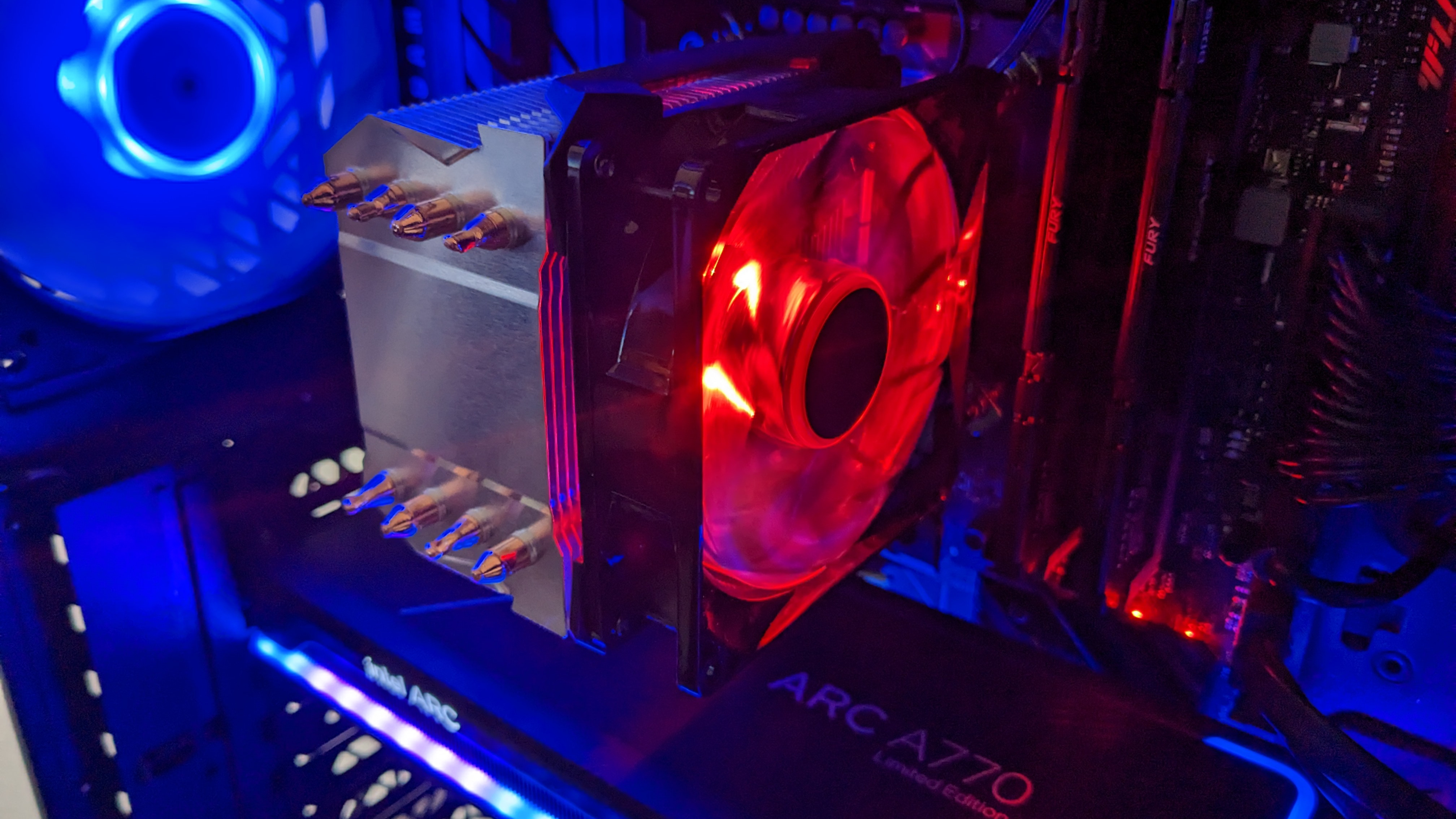
Amazon may have started off selling books beforee becoming the world’s largest online retailer, selling just about everything. But part of its ascent includes the introduction of its Amazon Basics line, designed to provide commonly used items like batteries, trash bags or towels at value prices.
With the success of the brand, it grew to include basic electronics like USB cables and wall chargers, creeping ever closer to the realm of PC hardware. And then finally this year, Amazon partnered with Cooler Master to expand that lineup even further, with an air cooler that’s listed on the site, in true convoluted keyword fashion, as the Amazon Basics Computer Cooling Fan with Cooler Master Technology.
At $28.49 USD, this basic air cooler costs less than a tank of gas – but is it actually any good? We’ll have to put it through testing to see if it performs well enough to make our best coolers list, but first let's take a look at the specifications from Amazon.
Cooler Specifications
If it wasn’t obvious from the Amazon Basics Computer Cooling Fan with Cooler Master Technology name, the Amazon Basics CPU cooler is effectively a rebranded Cooler Master product. The user manual included lists the model number as RR-H410-20PC-AS, which is nearly identical to the model number of Cooler Master’s Hyper H410R RGB. The specifications are identical to that product, so it’s basically a more-affordable rebrand of the H410R RGB.
Packing and Included Contents
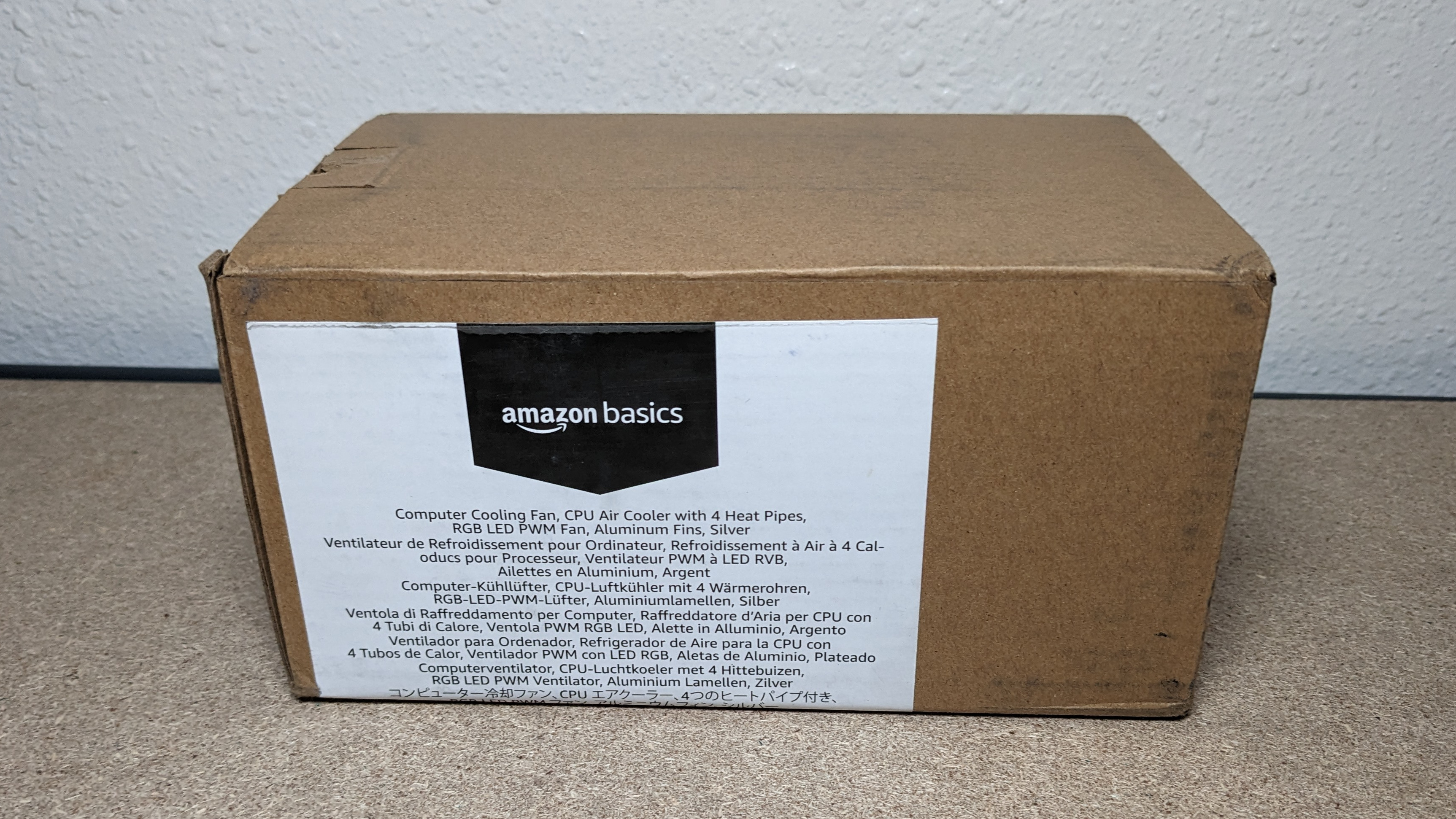
The Amazon Basics CPU Cooler arrives in a very basic small brown box and it is efficiently packaged. Taking off the top reveals the accessories box and removing that reveals the cooler protected by molded foam.
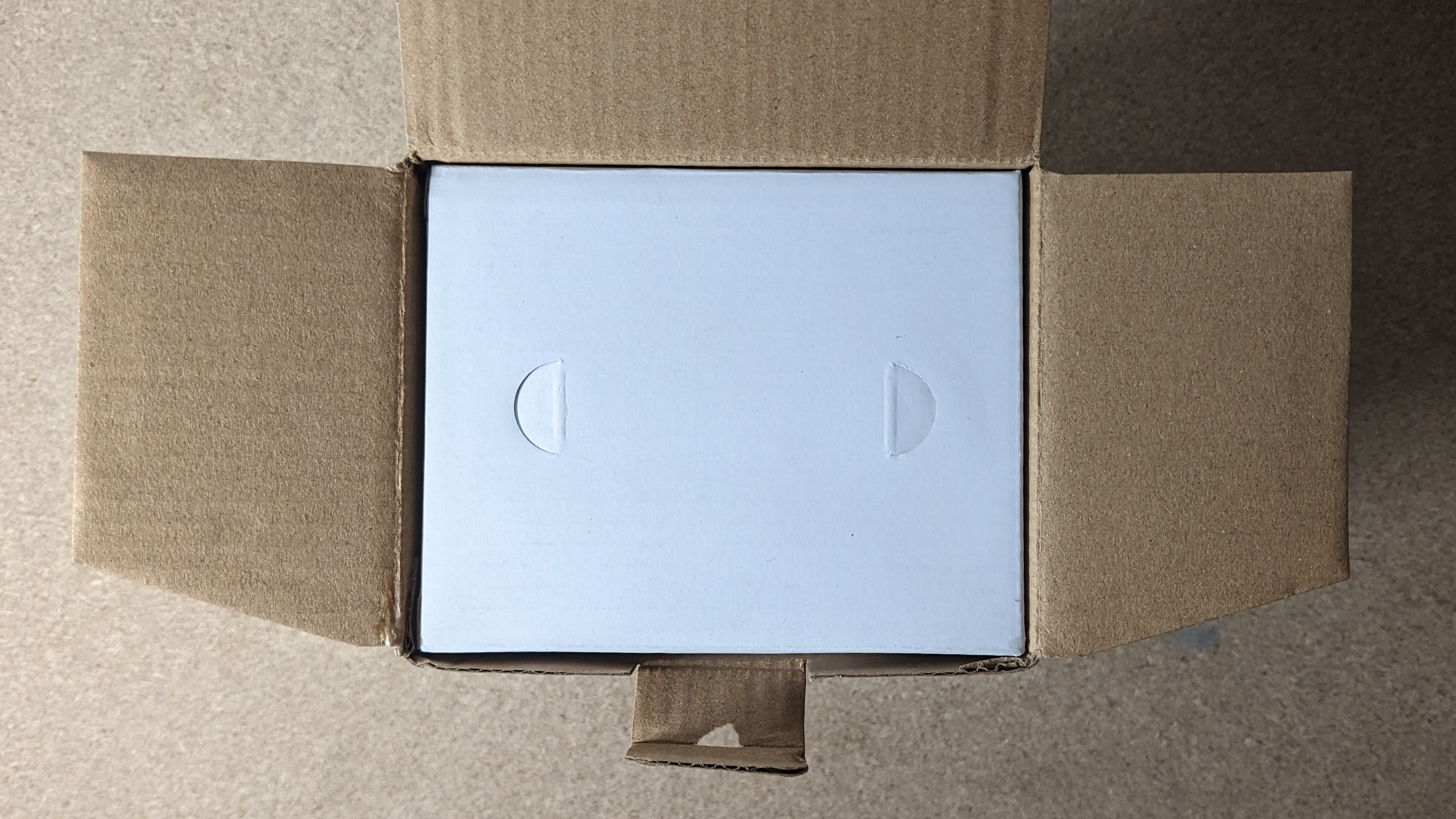
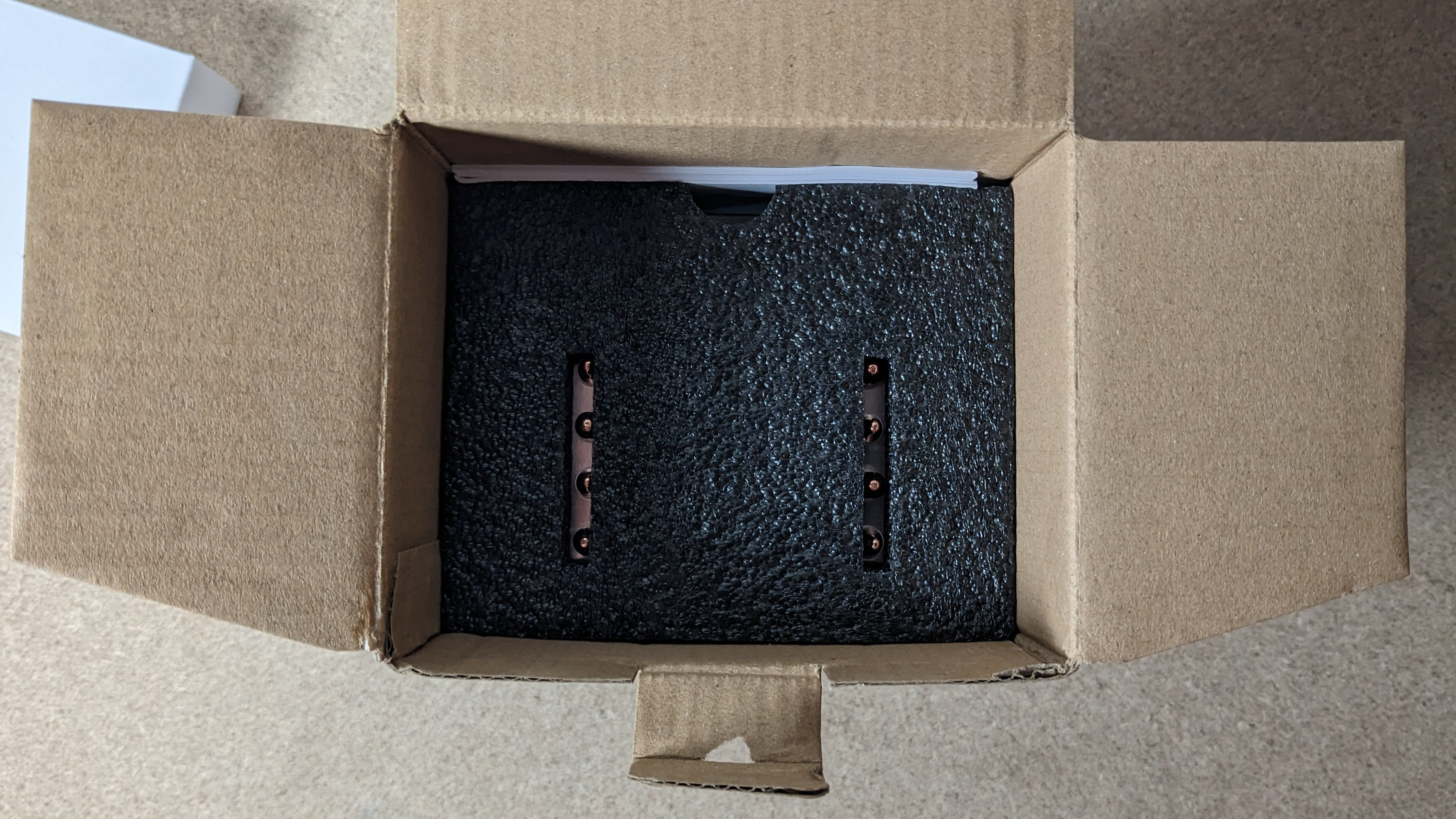
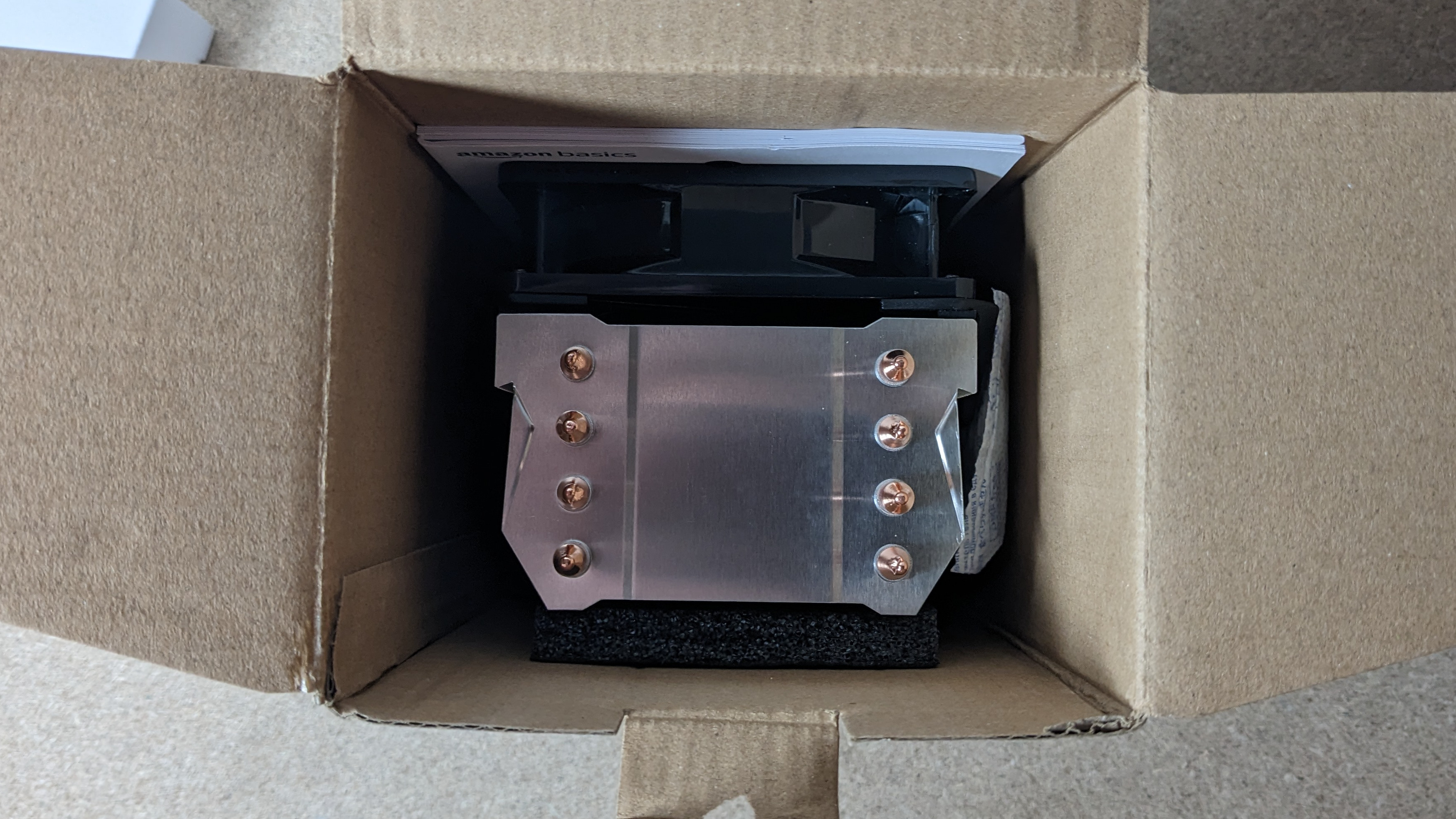
Included with the package are the following:
- 240 mm radiator and CPU block
- Heatsink
- Mounting for modern AMD & Intel Platforms
- RGB adapter
- Thermal paste
- Installation guide
- Safety manual
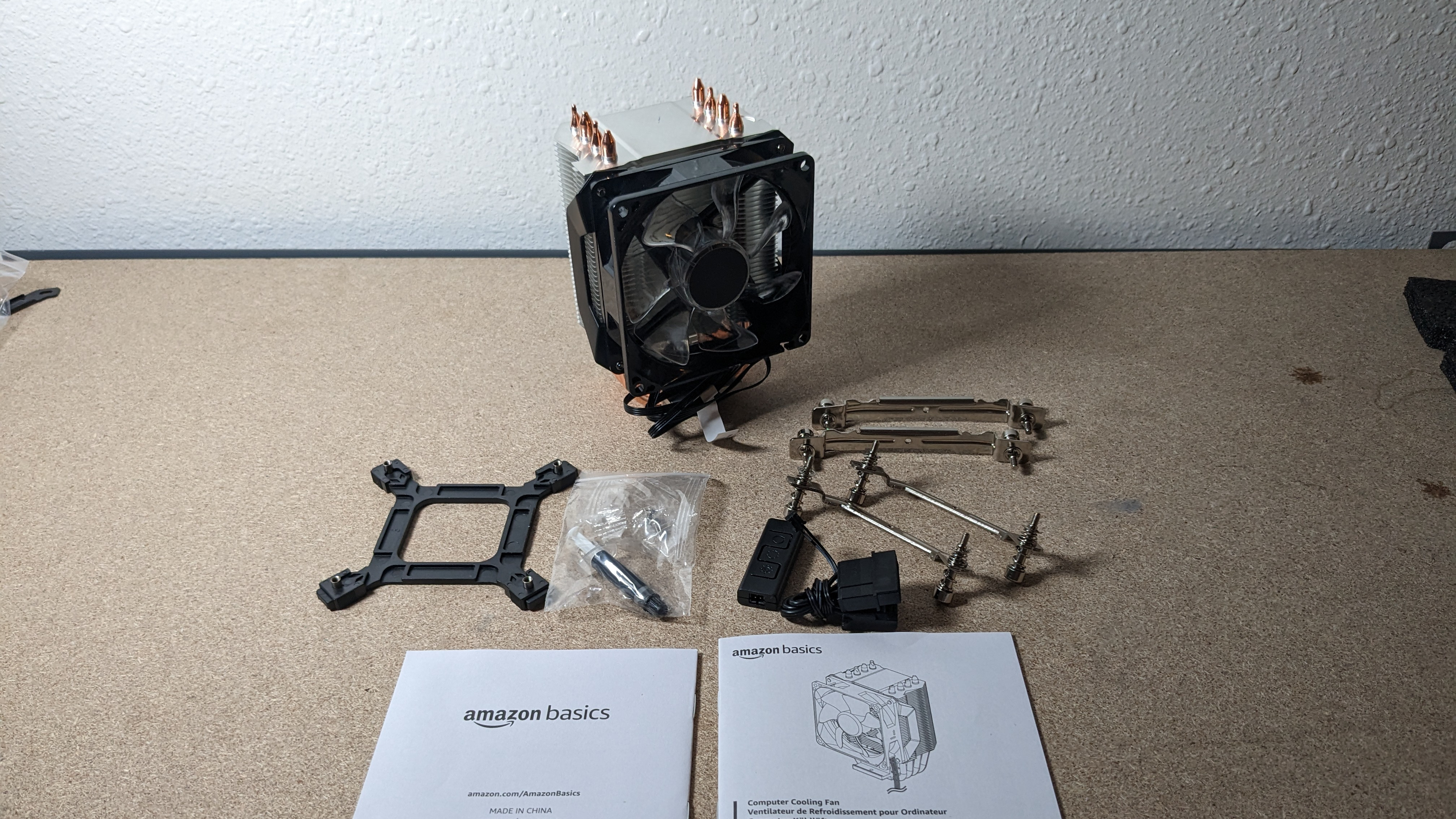
LGA 1700 Installation
Installation of the Amazon basics cooler was fairly simple, but not necessarily easy.
1. Attach the Intel mounting bars to the cooler’s base
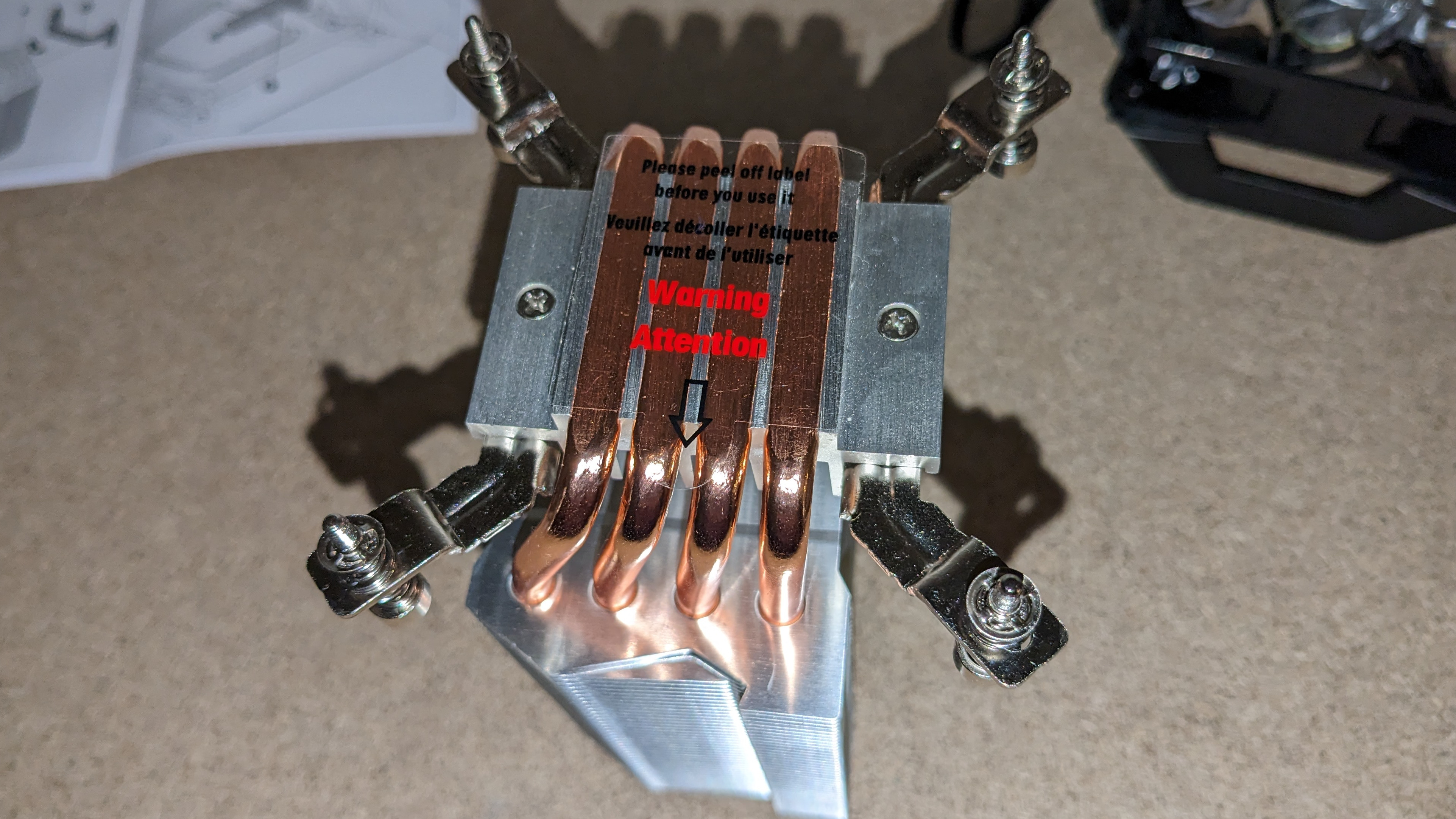
2. Apply thermal paste.
3. Take the backplate and hold it securely against the motherboard. While doing this, press the heatsink against the motherboard and secure it by screwing it into the backplate.
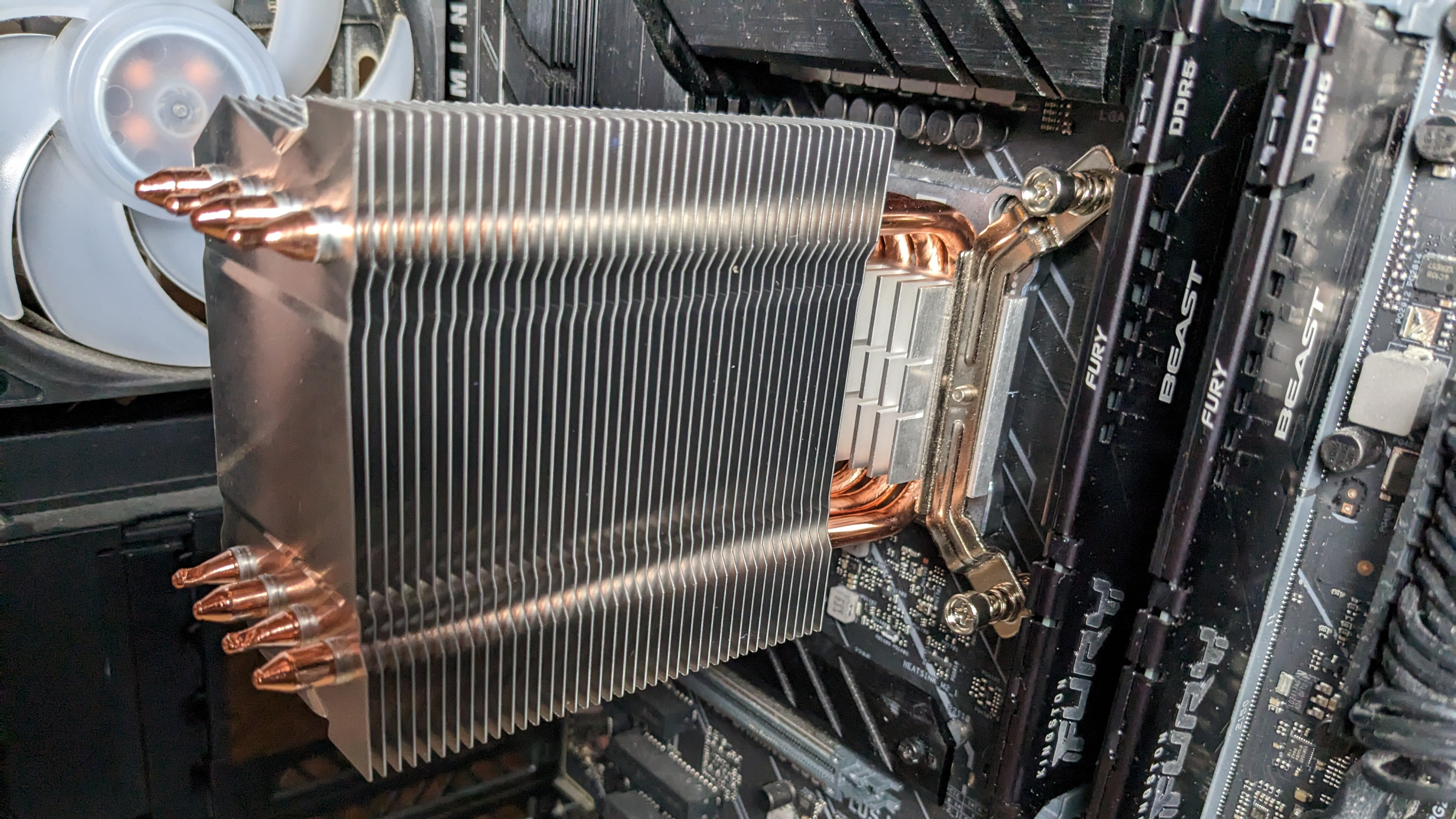
4. Snap the fan against the heatsink and connect the PWM and RGB cords.

Features of the Amazon Basics CPU Cooler
SFF Compatible
With a height of only 136.5mm, the Amazon Basics CPU cooler can fit in tight builds and is ideal for Micro ATX and Mini ITX systems.
Four Direct Contact Heatpipes
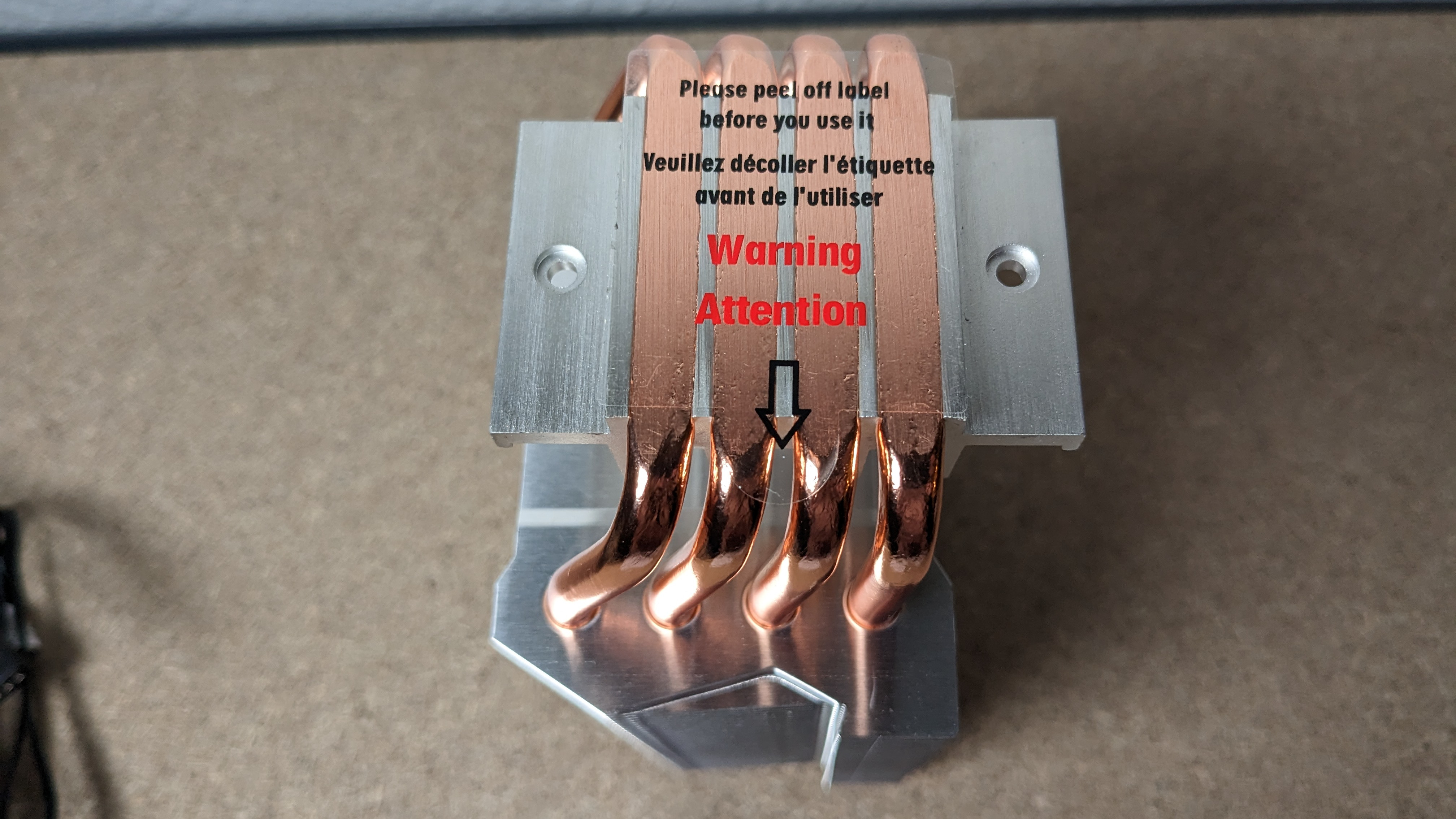
The Amazon Basics CPU cooler has four copper heatpipes that make direct contact with the CPU for maximum efficiency of thermal dissipation.
Hardware RGB Controller
The lighting on this cooler uses the older 4-pin RGB standard, which some modern motherboards no longer support. Included with the cooler is a simple three-button hardware lighting controller, which allows you to change the brightness, color, and lighting patterns.
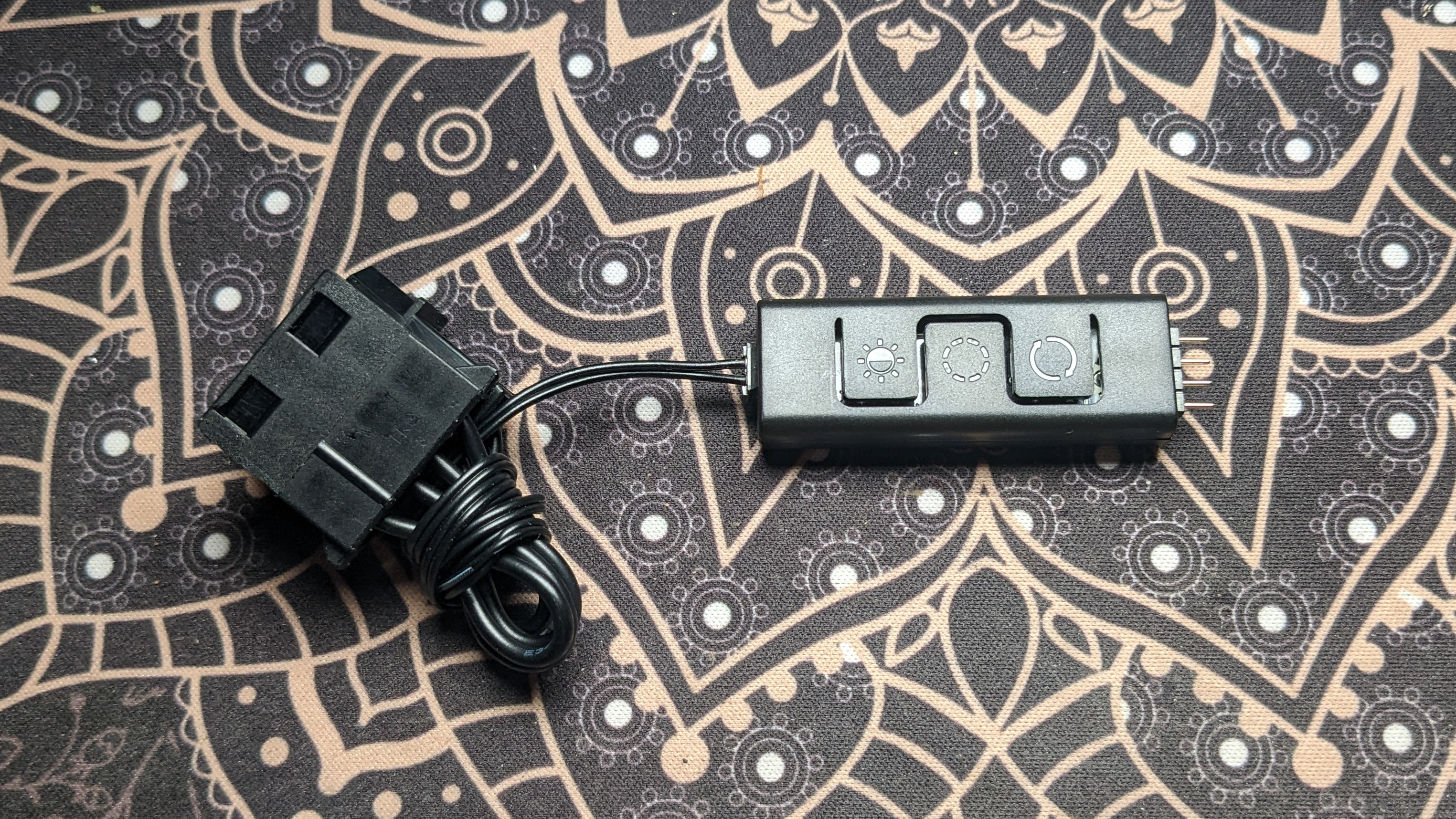
Stacked Aluminum fin design
The cooler heatsink is comprised of 40 fins, precisely stacked to increase the static pressure of airflow.
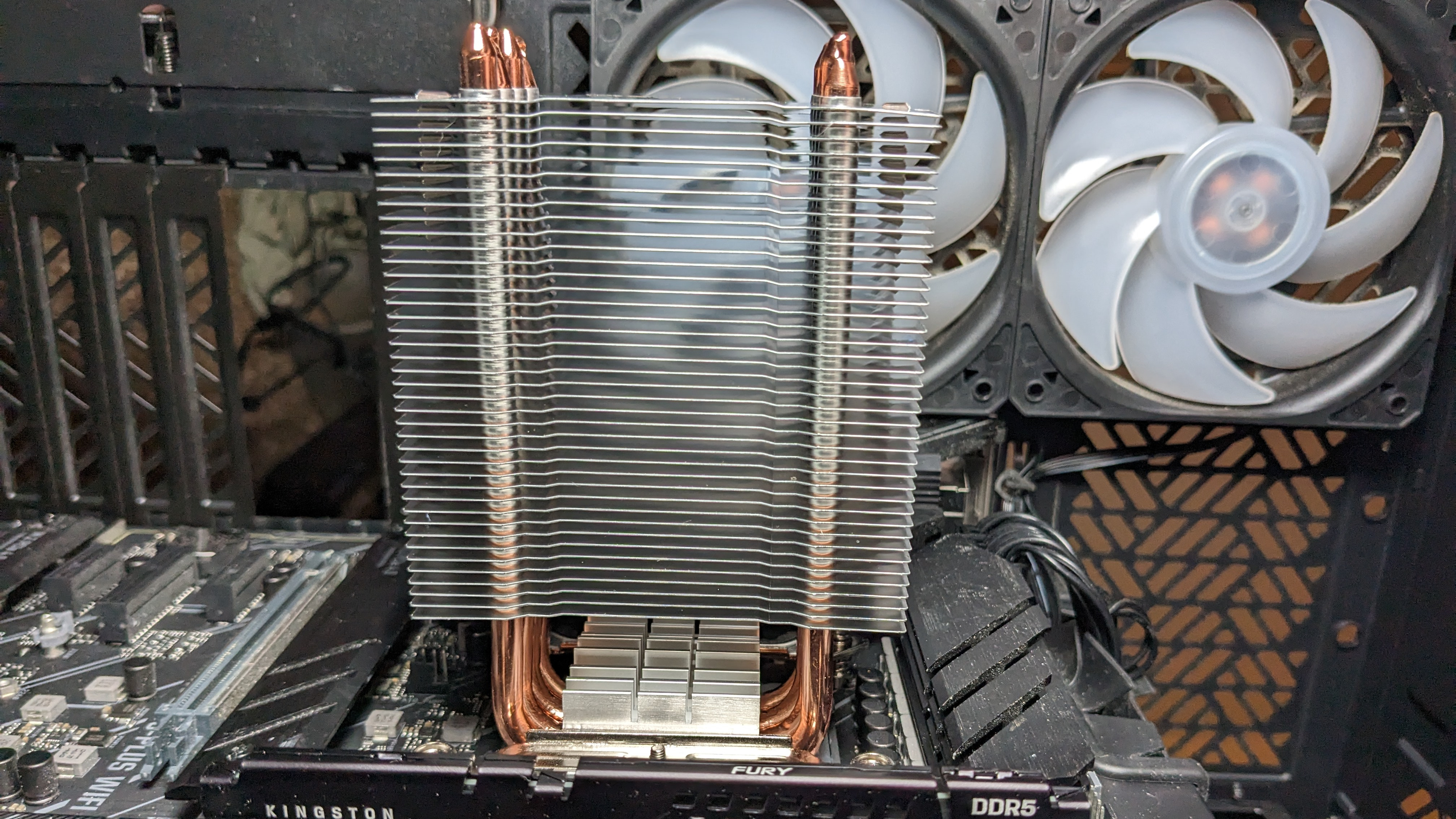
DF0922512RFHN 92mm Fan
There’s more to a cooler than just the heatsink or radiator, as the fan(s) impact both cooling capacity and noise levels. Included with Amazon’s cooler is a black 92mm fan with clear blades, listed as model DF0922512RFHN on its label.
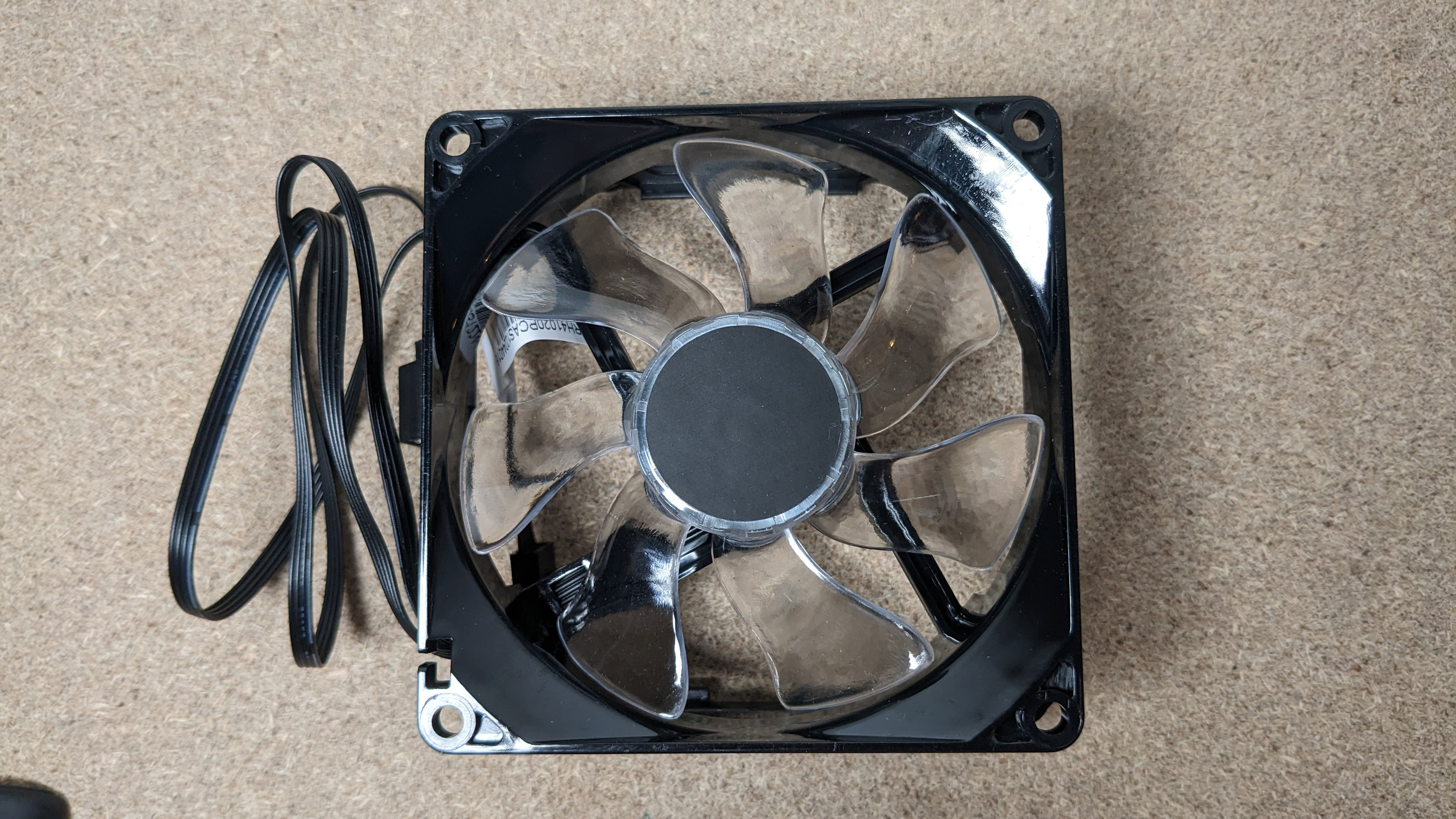
Testing Methodology
While it was fairly easy with previous generations of CPUs for coolers to keep the flagship i9 processor well under TJ max (the maximum temperature a CPU can sustain without throttling) in tough workloads, this is no longer realistically possible on current generation CPUs (and the 13900K especially) without extreme cooling (or enabling power limits).
In the past, a CPU hitting its peak temperature was cause for concern. But enthusiasts are going to have to learn to accept high temperatures as “normal” while running demanding workloads with Raptor Lake and Ryzen 7000 CPUs. Modern AMD and Intel CPUs are designed to run fairly hot without any problems – up to 95 degrees Celsius for AMD Ryzen 7000 CPUs, and up to 100 C for Intel’s Core i9-13900K. Similar behavior has been standard in laptops for years due to cooling limitations in tight spaces.
Furthermore, Intel’s Core i9-13900K supports Adaptive Boost Technology (ABT) which allows Core i9 processors to dynamically boost to higher all-core frequencies based on available thermal headroom and electrical conditions. This allows multi-core loads to operate at up to 5.5 GHz if the necessary amount of thermal dissipation is there. This feature works in a way that actively seeks high temperatures: If the chip sees that it is running underneath the 100-degree C threshold, it will increase its performance and power consumption until it reaches the safe 100 C limit, thus sustaining higher clocks (and providing better performance) for longer periods.
The increased cooling challenges posed by Raptor Lake mean that we’ve had to change some of the ways we test coolers. Some coolers were able to pass Cinebench R23 multicore testing with Intel’s 12th Gen i9-12900K when power limits were removed (although only the strongest models were able to pass that test). Most liquid coolers and all air coolers I’ve tested “failed” that test because the CPU reached TJ max in this scenario.
With Raptor Lake’s 13900K, not a single cooler tested has been able to keep the CPU under TJ max in this test – because as we pointed out, the chip is designed to dial up performance and power until it reaches that thermal result. We’ll compare performance instead by looking at total benchmark scores and clock speeds maintained.
I’ll be testing Intel’s i9-13900K CPU using Asus’ TUF Gaming Z690 Gaming Plus WIFI motherboard and Cooler Master’s HAF 700 Berserker computer case, with case fans limited to 35% speeds. The motherboard’s default fan curve is used for the CPU Cooler’s fans.
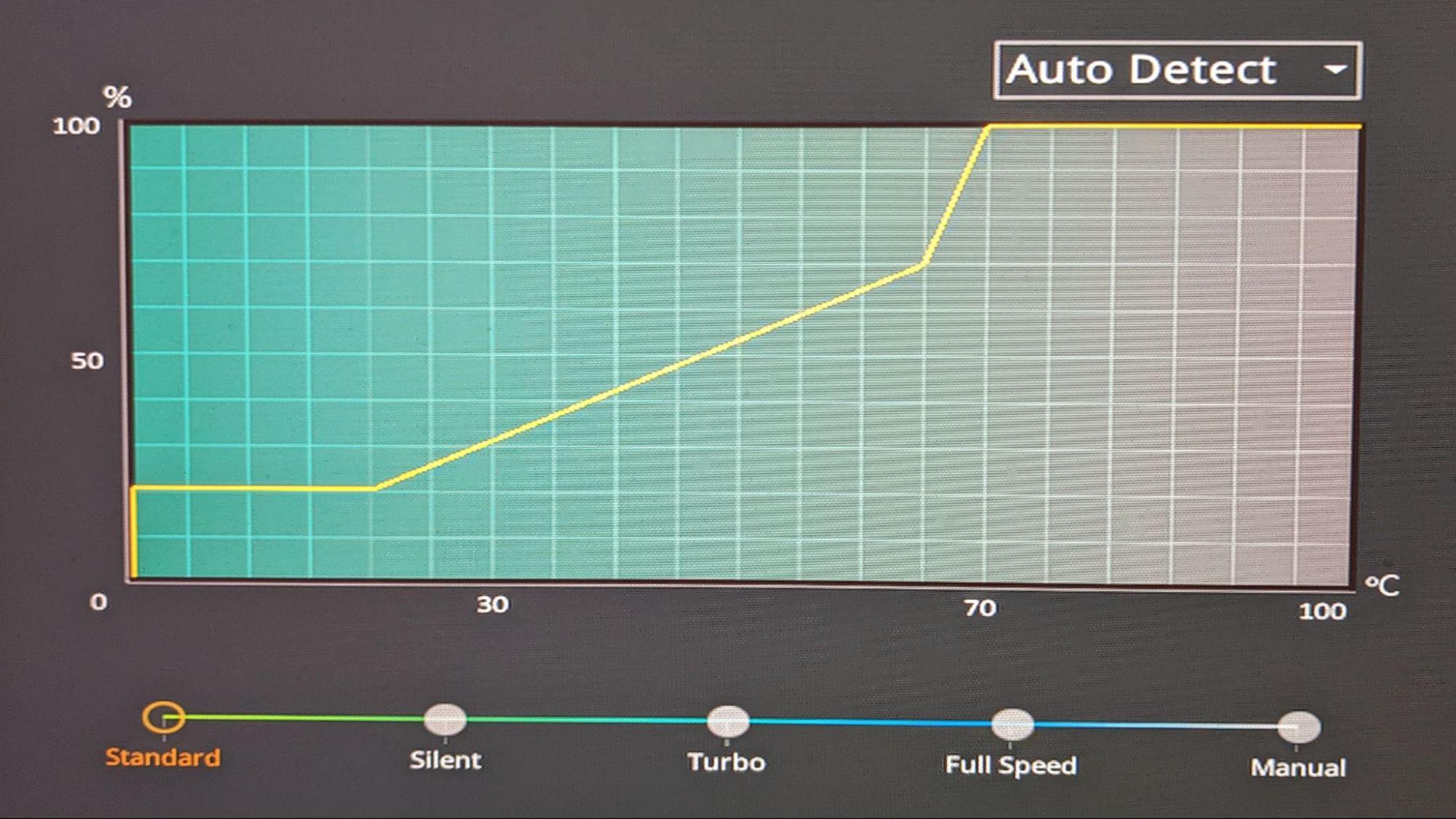
In addition to testing Cinebench without power limits enforced, we’ll also be showing results when the CPU’s power consumption is limited to a more reasonable 200W. We’ll also show results at 125W for those who prefer whisper-quiet cooling, at the cost of some performance. For both of these results, we’ll show traditional delta over ambient temperature results.
We’ll provide noise level measurements recorded using a PSPL25 Sound Meter for all three power levels tested to compare how much noise each cooler makes in different scenarios. We expect most coolers to run effectively silently at 125W.
LGA1700 Socket Bending
Note there are many factors other than the CPU cooler that can influence your cooling performance, including the case you use and the fans installed in it. A system's motherboard can also influence this, especially if it suffers from bending, which results in poor cooler contact with the CPU.
In order to prevent bending from impacting our cooling results, we’ve installed Thermalright’s LGA 1700 contact frame into our testing rig. If your motherboard is affected by bending, your thermal results will be worse than those shown below. Not all motherboards are affected equally by this issue. I tested Raptor Lake CPUs in two motherboards. And while one of them showed significant thermal improvements after installing Thermalright’s LGA1700 contact frame, the other motherboard showed no difference in temperatures whatsoever! Check out our review of the contact frame for more information.
Testing Configuration
MORE: How to Buy the Right CPU Cooler
MORE: How to Check CPU Temperature
MORE: All CPU Cooling Content
No Power Limits Cinebench Results
With Intel's i9-13900K pushing speeds of 5.5 GHz or higher, even the strongest of coolers hit TJ Max while running Cinebench R23 and other demanding scenarios. As the 13900K is designed to aim for its top safe temperature, we’ll be comparing the overall noise levels and total watts cooled instead.
The results below are for a 10-minute testing run. But to be sure that was sufficiently long to tax the cooler, we also retested both Thermalright’s Assassin X 120 R SE and DeepCool’s LT720 with a 30-minute Cinebench test. The results didn’t change much at all with the longer test: The average clock speeds maintained dropped by 29 MHz on DeepCool’s LT720 and 31 MHz on Thermalright’s Assassin X 120 R SE. That’s an incredibly small 0.6% difference in clock speeds maintained, a margin of error difference that tells us that the 10-minute tests are indeed long enough to properly test the coolers.
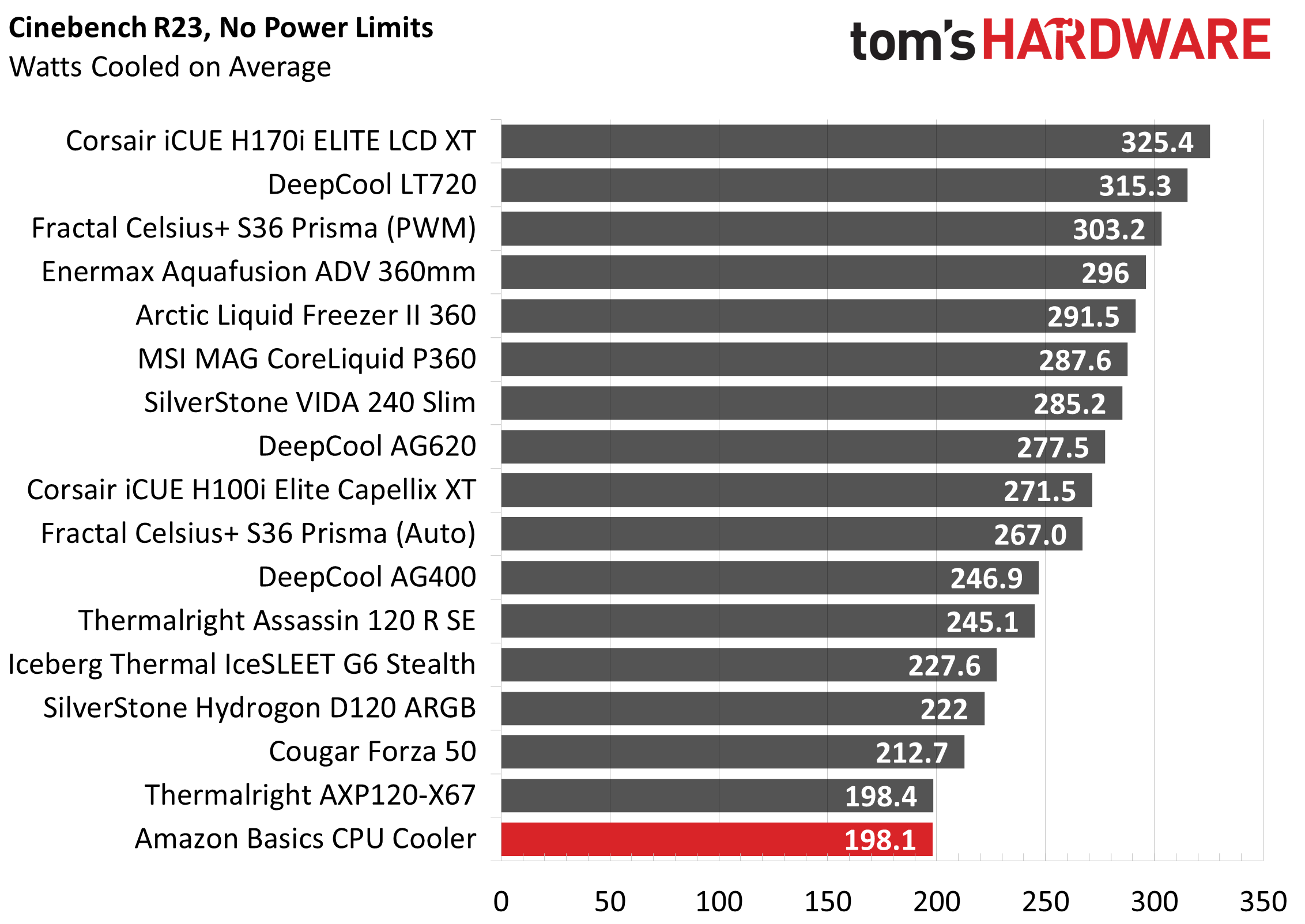
Because of the difficulty of cooling the i9-13900K in this workload, I feel the best way to compare coolers here is to record the average power consumption of the CPU. As Cinebench R23’s multi-core benchmark will push coolers to their limits, it’s also a great test for recording the worst-case scenario of fan noise levels.
When it comes to total cooling capacity, the Amazon Basics air cooler performed true to it’s name and only provided basic cooling capacity. At 198W total, you’re not going to win any overclocking competitions with this cooler – but it’s plenty sufficient for most common tasks, and should have no problems taming your average Core i5 or Ryzen 5 CPU.
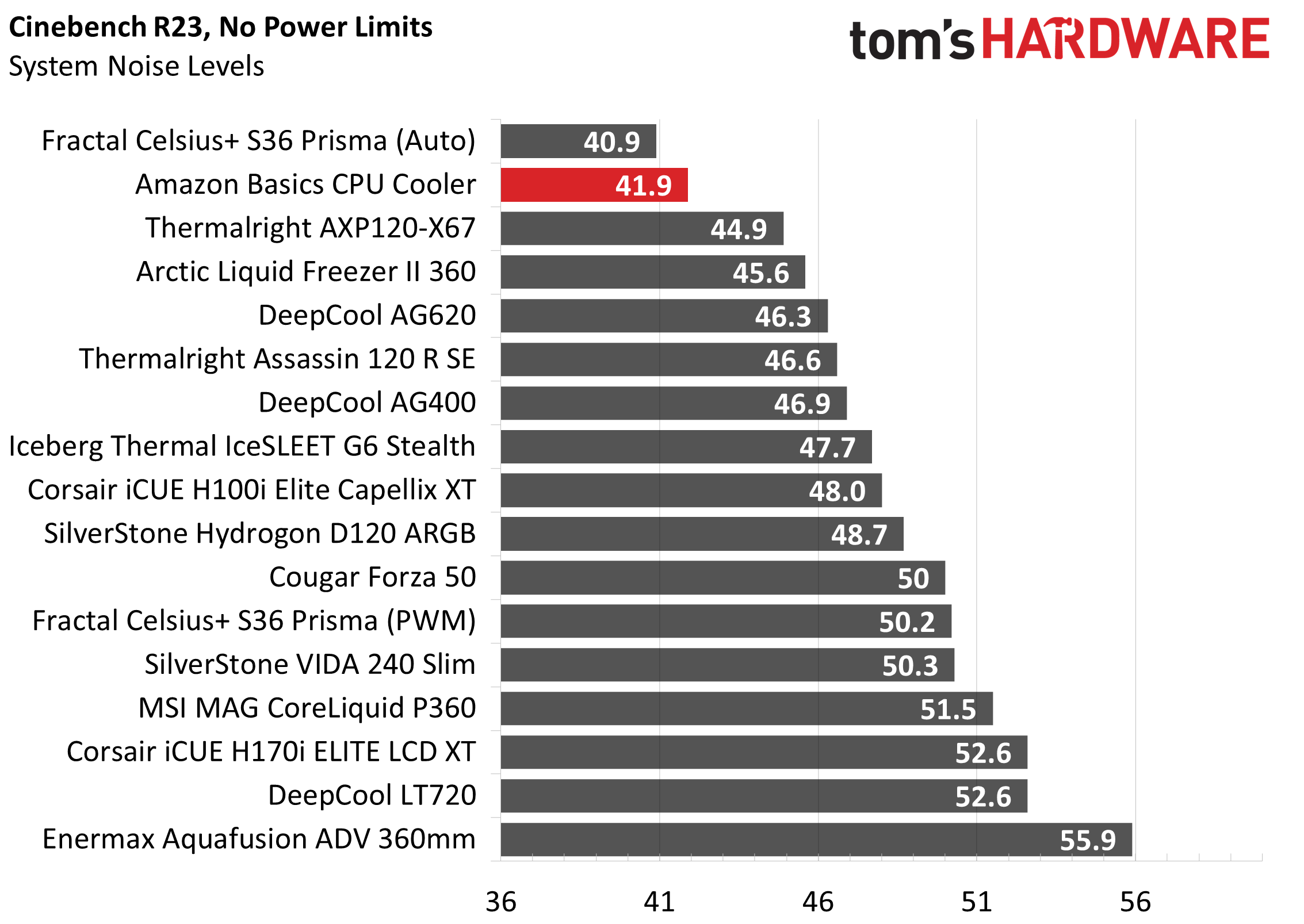
The average noise levels of all coolers tested is in this test 48.7 dBA, and many coolers will run loudly at full speeds. That’s not a problem with the Amazon Basics cooler, which runs quietly in all scenarios. With total system noise measuring at only 41.9 dBA, this is the second-quietest CPU cooler I’ve tested. Only Fractal’s $200 360mm AIO was quieter.
You might notice that our noise charts start at 36 decibels, which is the noise floor of our testing environment. This makes 36dB our baseline measurement, as we’re unable to measure noise levels below this threshold. Keep in mind that noise measurements are logarithmic, meaning the differences between the noise levels of the coolers will be more perceptible than these graphs would suggest.
200W Cinebench Results
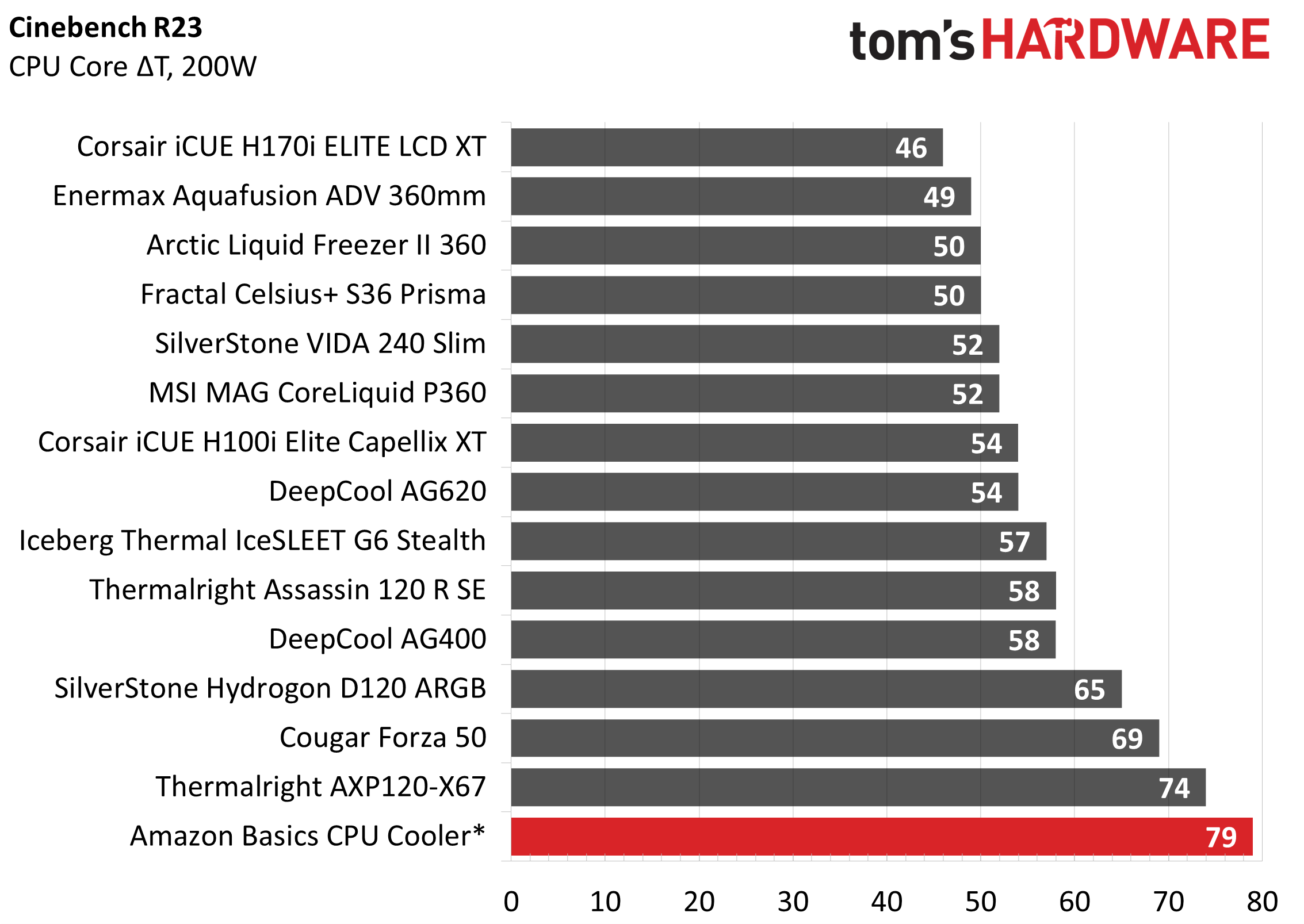
The Amazon Basics CPU cooler doesn’t technically pass our 200W test. In our default testing environment with a 23C ambient temperature, it’s only able to cool an average of 198W, but it’s still not bad considering the price.
Because of how close this cooler came to passing this test, I wanted to see if a lower ambient temperature would allow the cooler to “pass” this test. It was able to get it to handle 200W, but only when the ambient was 20C or lower. So if you want to drive this cooler to its limits, make sure your climate control is also on point.
125W Cinebench Results
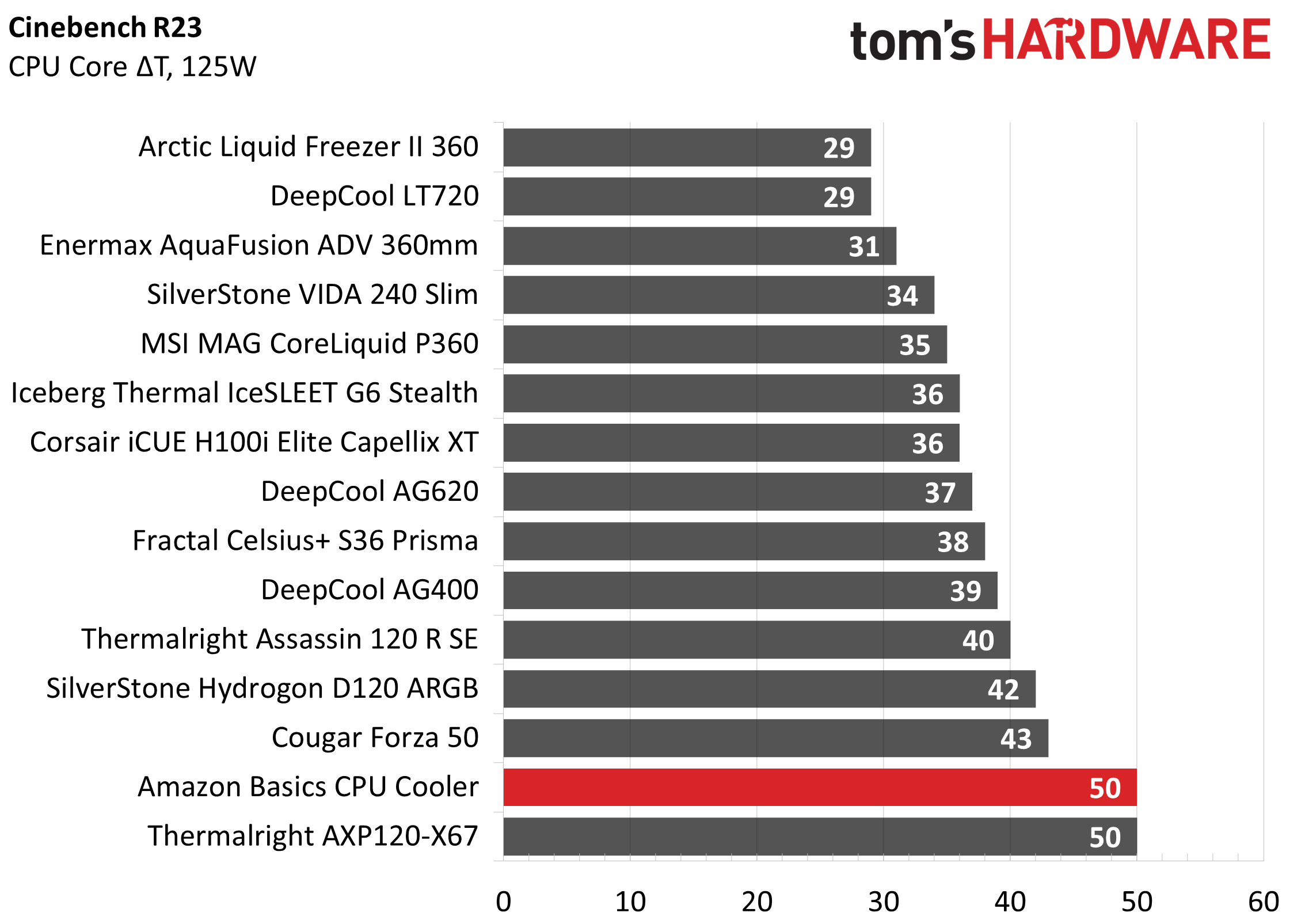
The lowest power limit I test at is 125W, mainly because this is also the lowest level where I can reliably measure noise measurements using Cooler Master’s HAF 700 Berserker. Lower power consumption causes the noise of many CPU coolers to fall below the noise created by the system fans (even while restricted to 35% speed).
Thermal results aren’t very important in this scenario, because even the weakest SFF coolers should be able to cool the CPU below TJ Max in this test. The thermal results of the Amazon Basics cooler here are not impressive at 50C over ambient. Noise levels are more important for the evaluation of performance in this scenario. The results here are excellent for the Amazon Basics air cooler, tied with our best results for low noise levels.
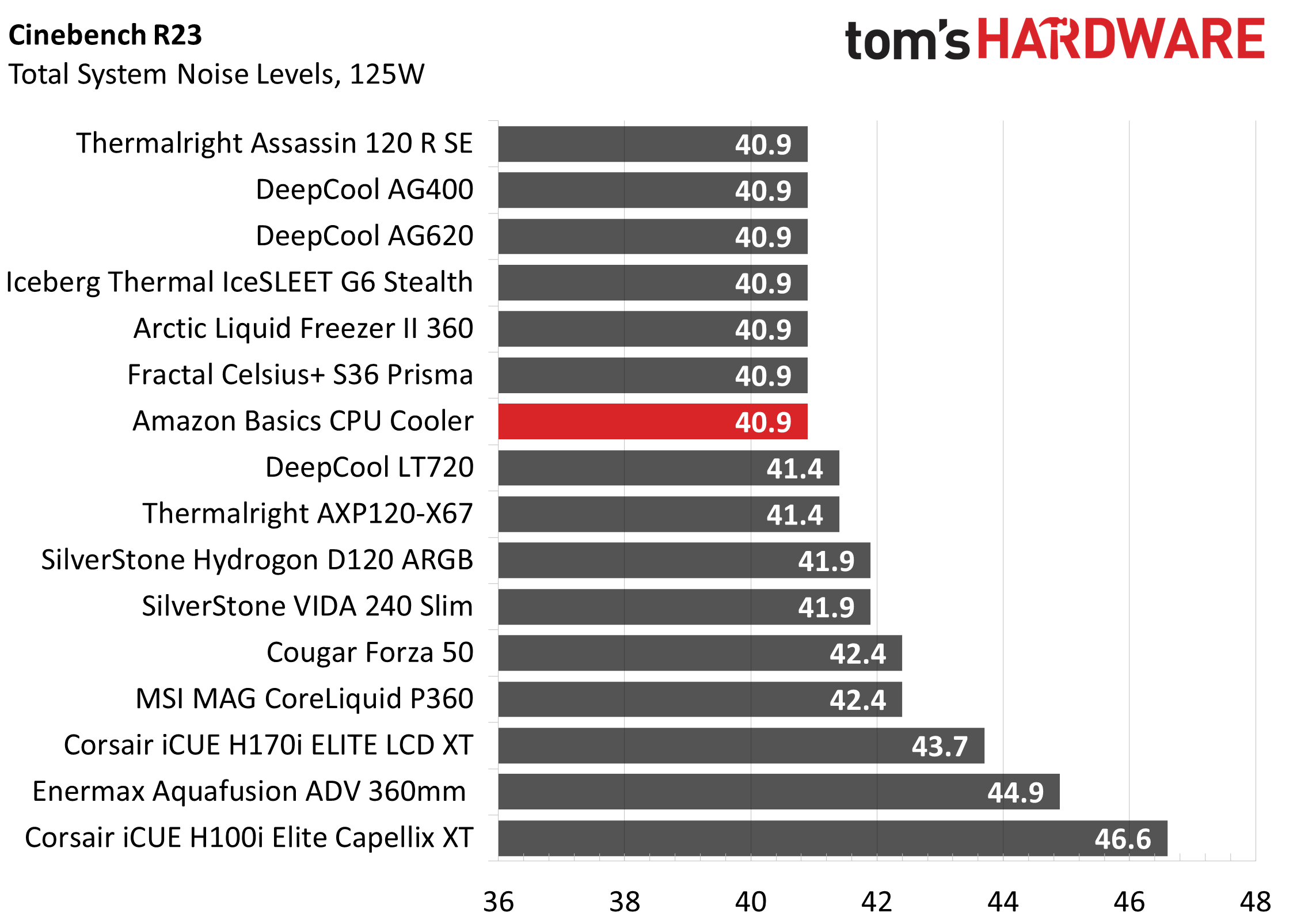
Conclusion
The Amazon Basics CPU cooler is true to it’s name, offering just 198W of cooling capacity when paired with Intel’s i9-13900K. While that’s not chart topping cooling capacity, it’s more than enough for the needs of common users who aren’t running a Core i9 and don’t plan to overclock. And the cooler runs whisper silent in all workloads.
If you’re looking for quiet cooling performance that doesn’t cost much or take up much space in your case, the Amazon Basics CPU Cooler will provide what you need. Just know that it’s not the easiest cooler to install.
MORE: How to Buy the Right CPU Cooler
MORE: How to Check CPU Temperature
MORE: All CPU Cooling Content







